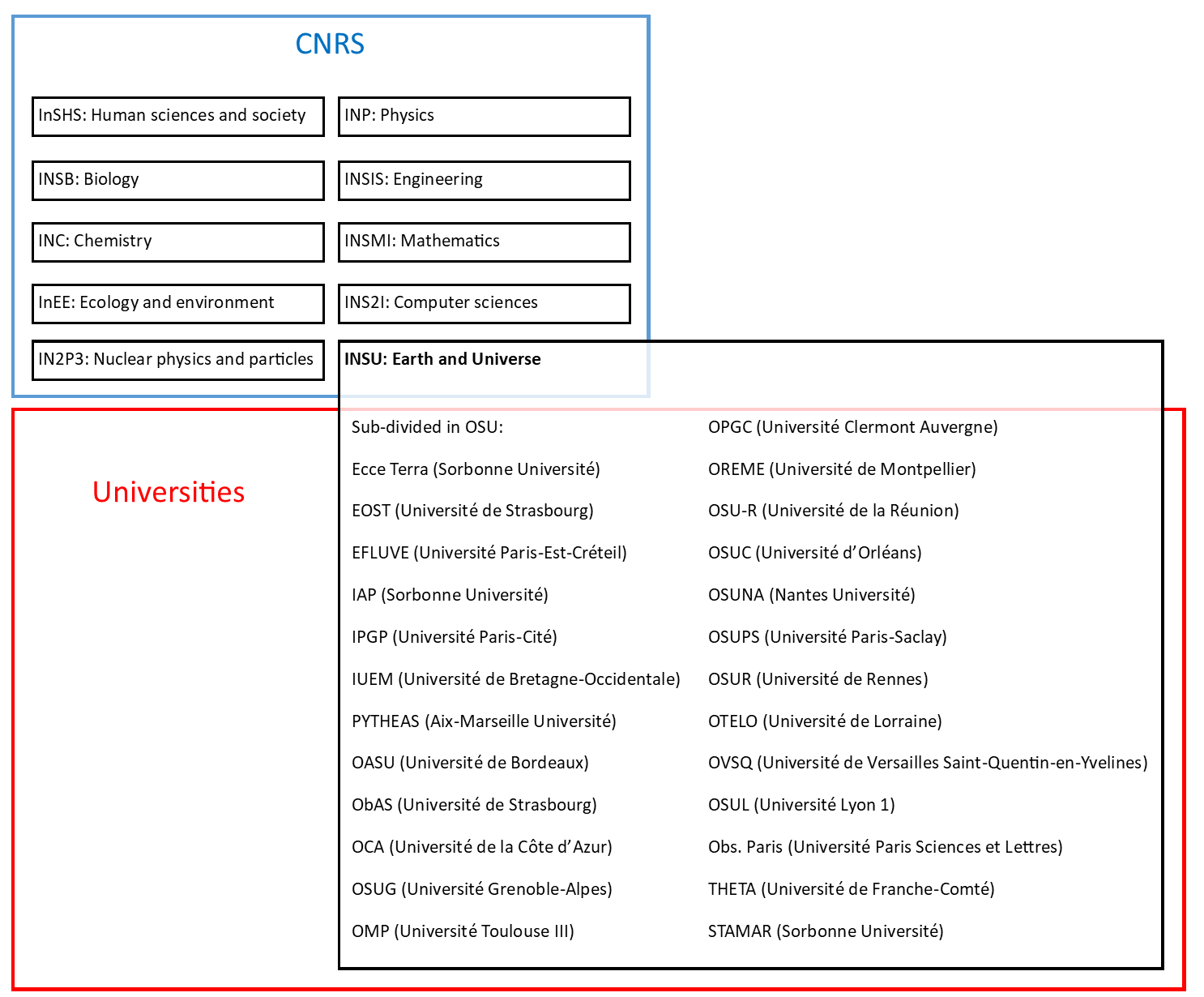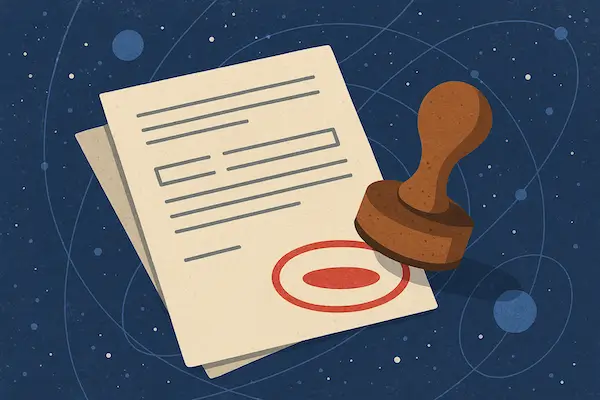Introduction to the CNAP, What Is It and What Does it Do?
One of the permanent positions in France is called the Astronome-adjoint (adjoint/assistant astronomer). The hiring process for this position is handled by the CNAP. The status of the CNAP is quite peculiar, which is what we will try to explain in this blog post. We will first look at what CNAP is, how it organizes the community work of its researchers and finally, its role in researchers’ career advancement.
Mission, Structure and History of the CNAP
The Conseil National des Astronomes et des Physiciens (National Committee of Astronomers and Physicists, CNAP) is a consultative and decision-making body. Their role is to take care of the hiring process and career evolution of a specific type of researchers, the Astronome and Physicien (astronomer and physicist), which we will present in detail below.
Historically, the Conseil National des Astronomes et des Physiciens was created in order to coordinate the research of all the different observatories in France. In 1977, it was created by merging the Conseil des observatoires astronomiques (committee of astronomical observatories, created in 1907) and the Conseil des instituts et observatoires de physique du globe (committee of globe physics observatories, created in 1925). Initially composed of two sections, a third was added in 2002.
The CNAP is composed of a committee of 32 persons, where 3/4 are elected and 1/4 are named by the Ministre de l’Enseignement Supérieur (Minister of Higher Education) following consultation with the Institut National des Sciences de l’Univers (National Institute of the Sciences of the Universe, INSU). The INSU is a subsection of the CNRS and you can learn more details about its status in the blog post about the CNRS here: Introduction to the CNRS, What Is It and What Does it Do?.
The CNAP is divided in three sections:
- Astronomie (Astronomy, president in 2024: Agnès Lèbre)
- Terre interne (Internal structure of the Earth, president in 2024: Frédéric Masson)
- Surfaces continentales-océan-atmosphère (Surfaces of continents, oceans and atmospheres, president in 2024: Antoine Rabatel, added in 2002)
The Astronomy section is the largest and is represented by 16 members in the committee (8 astronomers and 8 assistant astronomers) while the other two sections are represented by 8 members each (4 physicists and 4 assistant physicists).
Astronomers, Physicists, and Their Community Service
In order to understand the role of CNAP, one has to dive a bit more into the definition of the Astronomer and Physicist positions. They have a peculiar status in the researcher world: they are assimilated to assistant professors (i.e., their duties are both teaching and doing research) with a supplementary duty that is the community service (called Service National d’Observation, SNO or tâche de service in French). It is a task taken on by a CNAP researcher in order to contribute to the smooth operation of the large instruments used by the community, and this task accounts for ~20-25% of their time. The concrete community service tasks (SNOs) are suggested and carried out locally by the universities and their OSU (see below), however they are overseen by the INSU. Let us take a look at this step by step.
What Is A Service National d’Observation (SNO) And An Action Nationale d’Observation (ANO) ?
Also called tâche de service, the SNO is a mandatory community work based on the expertise of the researcher. It supports for example the smooth operation of large instruments, and access to public databases (e.g., exoplanet.eu, Ariel, Cheops, ELT). Each laboratory in France has its own set of SNOs, depending on its involvement in missions and on the local expertise of its researchers. The two most efficient ways to learn about which SNO is available in which laboratory are to take a look at the lab website (e.g., at the Institut d’Astrophysique Spatiale or the Laboratoire d’Astrophysique de Marseille); or at the national database listing them all: https://insu.obspm.fr/.
By taking a look at these sites, you will see that the different tâches de service (SNOs) are thematically grouped in Actions Nationales d’Observation (National observation actions, ANOs). There are 7 ANOs in Astronomy and Astrophysics (see the list on the INSU website for more details):
| Number | Name | Brief description |
|---|---|---|
| ANO1 | Métrologie de l’espace et du temps | Metrology of space and time services: establishment and maintenance of space-time reference points, covered by contractual activities with the State and by international agreements with the International Astronomical Union and the International Geodetic and Geophysical Union. |
| ANO2 | Instrumentation des grands observatoires au sol et spatiaux | Instrumentation of large ground and space instruments: design, prime, build and operate instruments for ground-based research infrastructures and space missions that provide data accessible to the whole community. |
| ANO3 | Stations d’observation | Observation stations: their management, their instrumental activities, instrument operation after commissioning and upstream actions aimed at qualifying and protecting existing and future observation sites. |
| ANO4 | Grands relevés, sondages profonds et suivi à long terme | Large-scale surveys, deep drilling and long-term monitoring: definition and management of major international observing programs aimed at mapping the sky in different spectral domains, tracking objects over long time scales, and systematically observing populations of objects |
| ANO5 | Centres de traitement, d’archivage et de diffusion de données | Data processing, archiving and distribution centers: data processing, archiving and distribution within dedicated structures that possess the necessary expertise and resources |
| ANO6 | Surveillance du Soleil et de l’environnement spatial de la Terre | Monitoring the Sun and the Earth’s space environment: operational forecasting and systematic monitoring on the long term |
| ANO-CC | Codes communautaires en astronomie-astrophysique | Astronomy and astrophysics community codes: development of complex codes with a generic vocation, requiring substantial, multiple developments and varied expertise over the long term to maintain their scientific relevance. |
For example, an SNO on the spatial mission JUICE is affiliated to the ANO2. 🙂
On the INSU website mentioned above, you can conduct a search by ANO. Each SNO task of this ANO is then listed, with a short description and the contact person. For example, at the Laboratory of Astrophysics of Bordeaux, in 2024, there are two tasks in the ANO1, six in the ANO2, three in the ANO3, two in the ANO4, four in ANO5 and one in ANO6. Please note that an SNO might be handled in different laboratories at the same time: for example, the JUICE mission (SNO affiliated to ANO2) is managed both at the Paris Observatory and the Laboratory of Astrophysics of Bordeaux. All the tasks available in a laboratory are coordinated by the Observatoire des Sciences de l’Univers (OSU) that the laboratory is affiliated with.
What Is An Observatoire des Sciences de l’Univers (OSU)?
The different laboratories are affiliated to universities via an Observatoire des Sciences de l’Univers (OSU). Another way to say it is that each laboratory has an OSU as their tutelle. The INSU is the only CNRS National Institute that is then sub-divided in OSUs (see the blog post Introduction to the CNRS, What Is It and What Does it Do?). This distribution in OSUs originates from the need to manage all the different SNOs at a global level. Below is a diagram showing the relation between the INSU and all the different OSUs with their related university:

Therefore, an Astronomer is affiliated to a laboratory which is involved in an OSU. This OSU is affiliated to the local university. The researcher performs their teaching duty by default at this university (there are special cases, e.g. in the complex region around Paris) and the SNO they work on is offered by this OSU (we love do love our acronyms in France 😉).
The Role of the CNAP in Career Evolution
The junior position that one gets when hired by the CNAP is the Astronome-adjoint (adjoint astronomer, when hired in the Astronomy section) or Physicien-adjoint (adjoint physicist, when hired in the other sections). The Astronome and Physicien positions are senior positions accessible through a promotional concours, also managed by the CNAP at roughly the same time like the “junior” concours we cover on this blog. On top of the classical criteria for the junior position, the committee takes new aspects into account for the promotions (e.g., involvement in the management of SNOs). The CNAP has therefore a primordial role in the career evolution of these positions.
Moreover, each year for the concours, the INSU announces a list of privileged ANOs. This coloration (“coloring”) advises the CNAP hiring committee members regarding the tasks that need hiring soon. In 2025, as announced on the CNAP website, the privileged tasks are tasks affiliated to the ANOs 1, 2, 3 and 5. However, this is not a hard requirement for CNAP to hire into these tasks specifically, it is really a recommendation by the INSU.
Relation to Other French Permanent Research Positions
As a reminder, the other junior French permanent research positions are the Chargé de Recherche with CNRS and Maître de Conférence with CNU. The community service (SNO) marks the main difference between the Astronome-adjoint position and the other positions. Its teaching duty is consequently less important than the Maître de Conférence, who has the same time allocated to research. The involvement of the Astronomer in their tâche de service gives them a unique status in the community and enhances their interactions with other researchers working on the field linked to the SNO.
Links:
- CNAP website: https://cnap.obspm.fr/
- CNAP structure: https://fr.wikipedia.org/wiki/Conseil_national_des_astronomes_et_physiciens
- INSU community services database: https://insu.obspm.fr/
- INSU website on SNOs and ANOs: https://www.insu.cnrs.fr/fr/les-services-nationaux-dobservation



